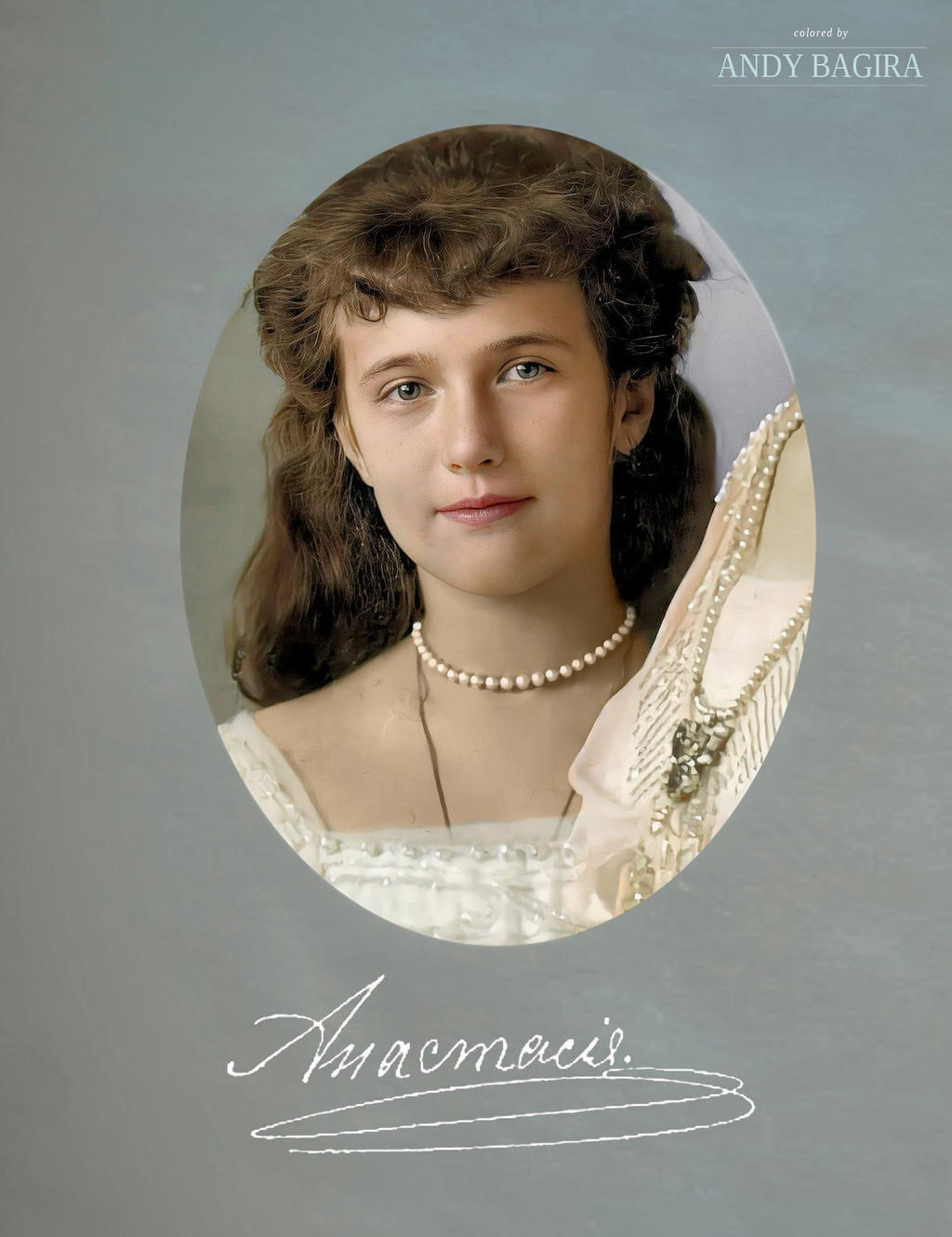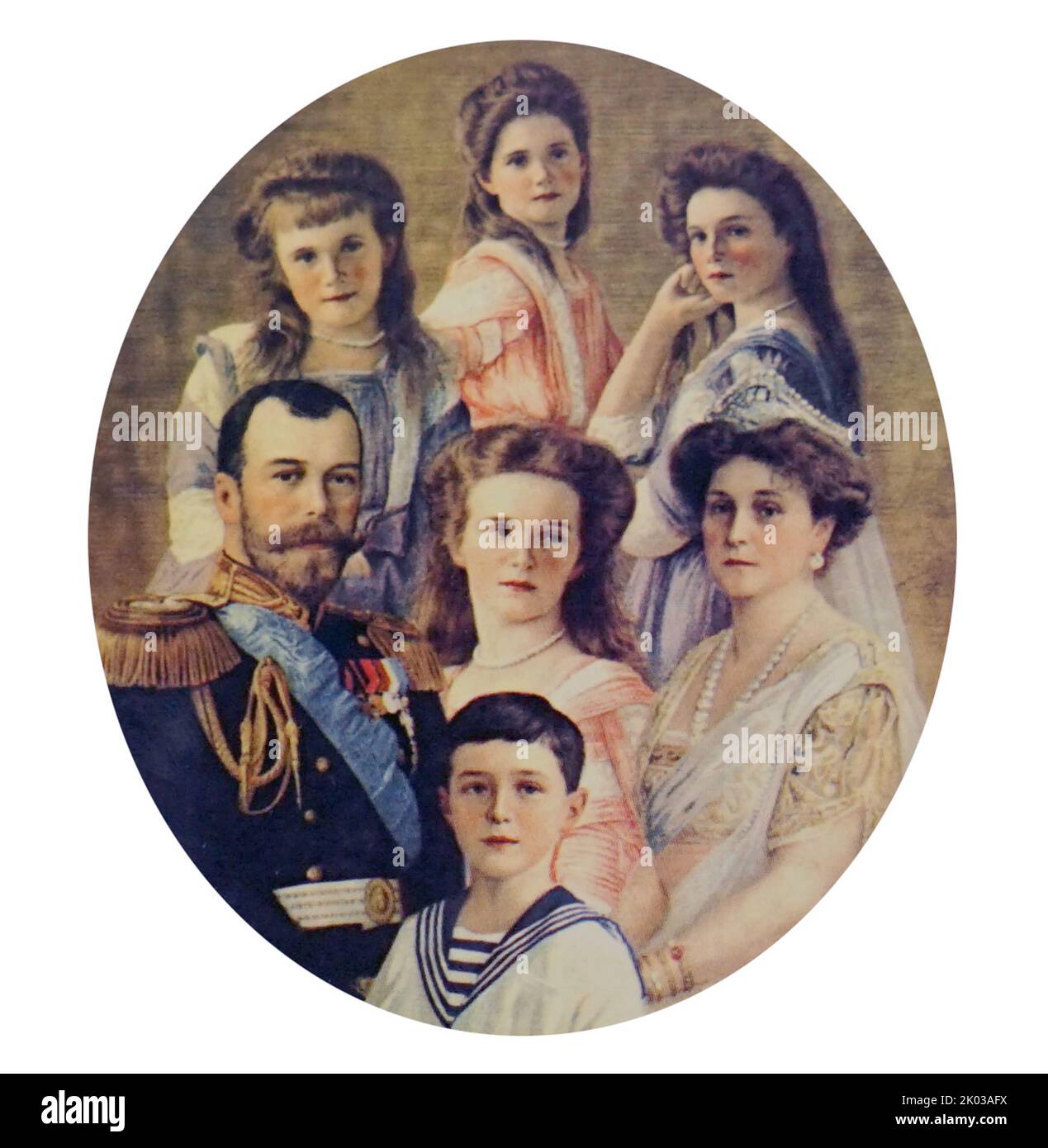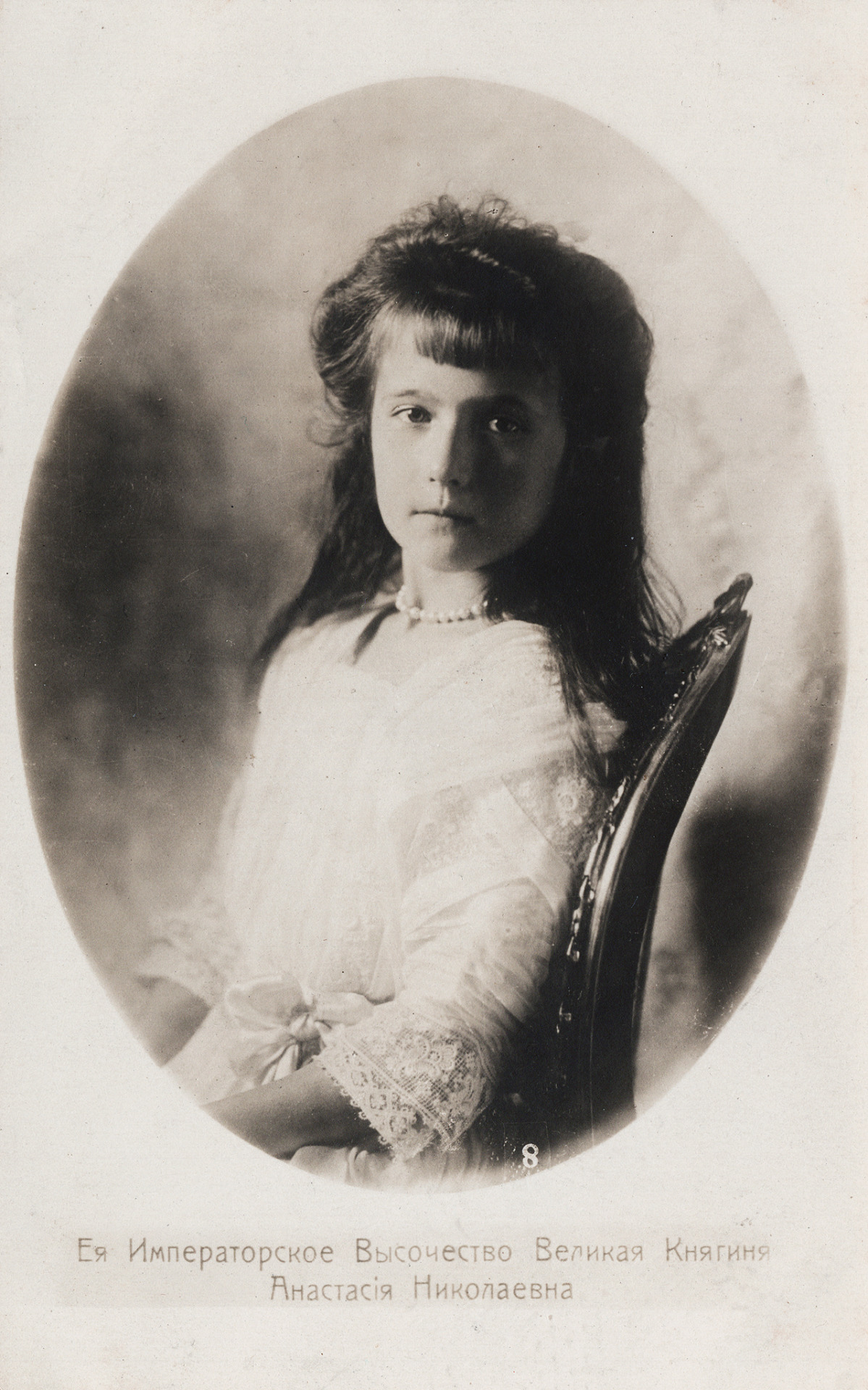Anastasia Romanov: The Enduring Mystery Of Russia's Lost Grand Duchess
The story of the Romanovs, Russia's last imperial family, is one steeped in both opulence and tragedy, culminating in their brutal execution during the tumultuous days of the Bolshevik Revolution. At the heart of this poignant narrative lies Grand Duchess Anastasia Nikolaevna of Russia, the youngest daughter of Tsar Nicholas II. For decades, her fate remained shrouded in a captivating mystery, fueled by whispers of survival and the desperate hopes of a world mourning a lost era.
Born into unimaginable privilege and destined for a life of imperial duty, Anastasia's world was irrevocably shattered by the tides of history. This article delves into the life, the tragic death, and the enduring legacy of the Grand Duchess Anastasia Nikolaevna, exploring how historical and scientific evidence ultimately brought clarity to a century-old enigma.
Table of Contents
- Grand Duchess Anastasia Nikolaevna: A Brief Biography
- Personal Data and Biodata
- A Glimpse into Her Imperial Childhood
- The Unraveling Empire: From Royalty to Captivity
- The Tragic End: July 17, 1918
- The Enduring Mystery: Claims of Survival and Impostors
- Scientific Confirmation: Unraveling the DNA Evidence
- Legacy and Lasting Impact
Grand Duchess Anastasia Nikolaevna: A Brief Biography
Grand Duchess Anastasia Nikolaevna of Russia, born Anastasiya Nikolayevna Romanova, entered the world on June 18, 1901, in Petrodvorets, Russia – a town near St. Petersburg formerly known as Peterhof. She was the fourth and youngest daughter of Tsar Nicholas II, the last sovereign of Imperial Russia, and his wife, Tsarina Alexandra Feodorovna (born Princess Alix of Hesse and by Rhine). Her birth was met with some disappointment, as the imperial couple desperately hoped for a male heir to secure the Romanov dynasty. However, Anastasia quickly endeared herself to her family and household with her vibrant personality and mischievous spirit.
Her life, though short, was marked by the grandeur of the Russian court, followed by the harrowing ordeal of imprisonment and ultimately, a brutal execution. From her early days in the opulent Alexander Palace to her final moments in the Ipatiev House, Anastasia's existence was inextricably linked to the fate of the Romanov Empire. This biography of Grand Duchess Anastasia provides detailed information about her childhood, life, and the tragic circumstances that led to her premature death, which has fascinated historians and the public alike for over a century. Learn about the life and death of Anastasia Nikolaevna, the youngest daughter of Tsar Nicholas II of Russia, who was executed during the Bolshevik Revolution.
Personal Data and Biodata
To provide a clearer picture of Grand Duchess Anastasia Nikolaevna, here is a summary of her personal data:
| Category | Detail |
|---|---|
| Full Name | Anastasia Nikolaevna Romanova (Анастаси́я Никола́евна Рома́нова) |
| Born | June 18 [O.S. June 5] 1901 |
| Place of Birth | Peterhof (Petrodvorets), Saint Petersburg, Russia |
| Died | July 17, 1918 (aged 17) |
| Place of Death | Yekaterinburg, Russian SFSR |
| Parents | Tsar Nicholas II Romanov of Russia and Tsarina Alexandra Feodorovna (Princess Alix of Hesse and by Rhine) |
| Siblings | Grand Duchess Olga Nikolaevna, Grand Duchess Tatiana Nikolaevna, Grand Duchess Maria Nikolaevna, Tsarevich Alexei Nikolaevich |
| Dynasty | House of Romanov |
| Burial Site | Peter and Paul Cathedral, Saint Petersburg, Russia (re-interred) |
A Glimpse into Her Imperial Childhood
Grand Duchess Anastasia Nikolaevna's early years were spent within the gilded cages of imperial palaces, primarily the Alexander Palace in Tsarskoye Selo. Located just south of St. Petersburg, where Alexander Palace and the larger Catherine Palace, the two summer palaces, are situated, this was the setting for much of her childhood. Surrounded by immense wealth and privilege, her childhood was nonetheless shaped by the close-knit nature of her immediate family and the looming shadow of her brother Alexei's hemophilia.
Family Life and Dynamics
The Romanov family, despite their public roles, were remarkably private and devoted to one another. Tsar Nicholas II and Tsarina Alexandra fostered a loving environment for their five children: Olga, Tatiana, Maria, Anastasia, and Alexei. The daughters, often referred to by their combined initials "OTMA" (Olga, Tatiana, Maria, Anastasia), shared a strong bond. Photos from the era depict a family often at ease, enjoying simple pleasures like meals on the balcony of the Alexander Palace in 1916, with Grand Duchess Anastasia Nikolaevna of Russia during a meal with her family on the balcony of the Alexander Palace, 1916 (Public domain via Wikimedia Commons), or relaxing together in captivity, as seen in the winter of 1917 at Tobolsk, with Grand Duchess Olga Nikolaevna of Russia, Tsar Nicholas II, Grand Duchess Anastasia Nikolaevna of Russia and Grand Duchess Tatiana Nikolaevna of Russia captured in a rare moment of togetherness.
The health of their only son, Tsarevich Alexei, dominated much of the family's private life. His hemophilia, a closely guarded secret, led Tsarina Alexandra to rely heavily on the controversial mystic Grigori Rasputin, whose influence would later contribute to the downfall of the dynasty. Despite the underlying anxieties, the Grand Duchesses enjoyed a relatively normal upbringing for imperial children, receiving education from private tutors and engaging in hobbies typical of their age, albeit within the confines of their royal status. Learn about the life, death and burial of Anastasia Nikolaevna, the youngest daughter of Tsar Nicholas II and Princess Alix of Hesse, and explore photos, memories, sources, world events and name meaning related to her and her family.
A "Perfect Enfant Terrible": Anastasia's Personality
Of all the Romanov children, Grand Duchess Anastasia Nikolaevna was perhaps the most vivacious and spirited. Contemporaries and family members often described her as "witty, vivacious, hopelessly stubborn, delightfully impertinent, and in general a perfect enfant terrible." Her playful nature and penchant for pranks were well-documented in the diaries and letters of the grand dukes and her own correspondence. Letters of Grand Duchess Anastasia, along with letters from Alexandra and Aleksey in exile, offer poignant insights into their daily lives and dwindling hopes during this period. She was known for her sharp wit and her ability to lighten the mood, even during the increasingly tense political climate leading up to the revolution. This vibrant personality made her a favorite among the palace staff and a source of joy for her family, contrasting sharply with the more reserved demeanor of her elder sisters. A sketch of Anastasia Nikolaevna, Grand Duchess of Russia, charcoal on canvas, used with the kind permission of the artist, Igor Babailov, captures a glimpse of her youthful spirit.
The Unraveling Empire: From Royalty to Captivity
The early 20th century was a period of immense social and political upheaval in Russia. World War I, economic hardship, and growing public discontent with the autocratic rule of Tsar Nicholas II set the stage for revolution. In March 1917, the monarchy collapsed, and the Romanov family was placed under house arrest, marking the end of their imperial life and the beginning of their tragic journey.
Imprisonment in Tobolsk
Initially, the imperial family was held at their residence, the Alexander Palace, but as the political situation deteriorated, they were relocated to Tobolsk, a remote town in Siberia, in August 1917. Life in captivity was a stark contrast to their former existence. Though still afforded some comforts, their freedom was severely restricted. The family remained in Tobolsk until they were relocated to the Ipatiev House in Yekaterinburg in the spring of 1918. Letters from Alexandra and Aleksey in exile, along with diaries of the grand dukes, offer poignant insights into their daily lives and dwindling hopes during this period.
The Final Journey to Yekaterinburg
The move to Yekaterinburg in April-May 1918 was orchestrated by the Bolsheviks, who had seized power in the October Revolution. This journey was particularly arduous. Grand Duchess Anastasia Nikolaevna of Russia, along with her family, traveled on a ship named the "Rus" to reach Yekaterinburg in May 1918. This period marked a significant escalation in their confinement and the increasing danger they faced. The Ipatiev House, a requisitioned merchant's mansion, would become their final prison. This is the last known photograph of Anastasia, taken during this grim journey, a haunting image of a young life on the precipice of oblivion.
The Tragic End: July 17, 1918
The fate of the Romanovs was sealed on the night of July 16-17, 1918. In the early hours of July 17, Tsar Nicholas II, Tsarina Alexandra, their five children – Olga, Tatiana, Maria, Grand Duchess Anastasia Nikolaevna, and Alexei – along with their doctor and three loyal servants, were brutally executed by members of the Cheka, the Bolshevik secret police, in the cellar of the Ipatiev House. The order came directly from the highest levels of the Bolshevik government, fearful of the family becoming a rallying point for anti-Bolshevik forces during the ongoing Russian Civil War. This horrific act brought an abrupt and violent end to the Romanov dynasty, which had ruled Russia for over 300 years. As the youngest daughter of Tsar Nicholas II, the ultimate emperor of Russia, Anastasia’s existence became tragically cut brief at the tender age of 17. Learn about the life and death of the youngest daughter of Tsar Nicholas II, who was murdered with her family by Bolsheviks in 1918. Learn about the life and death of Anastasia, the youngest daughter of the last Romanov Czar, who was executed by revolutionaries in 1918.
The Enduring Mystery: Claims of Survival and Impostors
Despite the official reports of their execution, rumors of the Romanovs' survival, particularly that of Grand Duchess Anastasia Nikolaevna, persisted for decades. The secrecy surrounding the burial, combined with the chaotic political climate, fueled these theories. The idea that one of the children, especially the youngest, might have escaped the massacre captured the public imagination. Discover the mystery that surrounded her death and the claims of impostors who said they were her.
The most famous claimant was Anna Anderson, who emerged in Germany in 1920, claiming to be the miraculously rescued Grand Duchess

Grand Duchess Anastasia Nikolaevna of Russia by AndyBagira on DeviantArt

The royal family in 1913. Grand Duchess Olga Nikolaevna, Grand Duchess

Grand Duchess Anastasia Nikolaevna, 1910,...